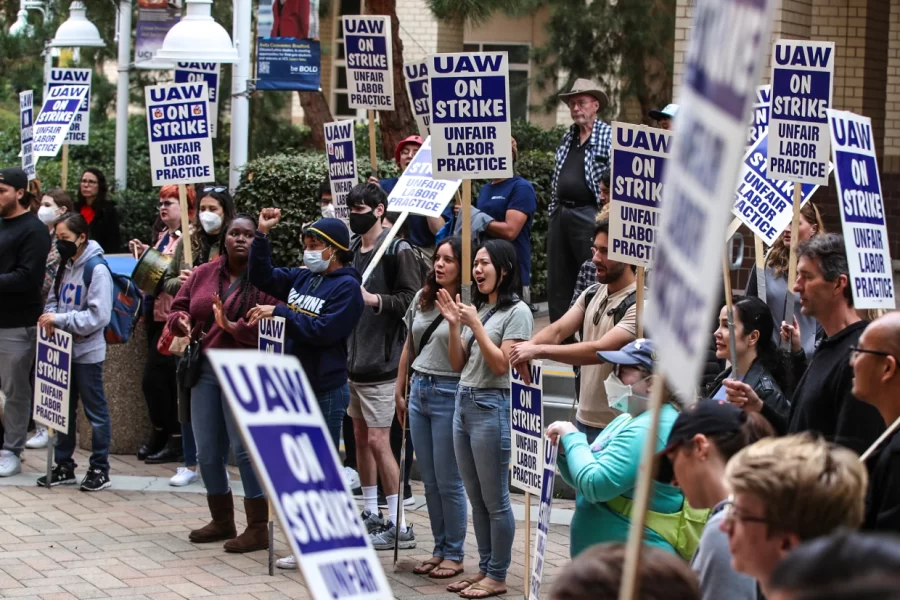Aftermath of the UC Strikes: Largest Strike of the Year
Allen J. Schaben / Los Angeles Times via Getty Images
University of California picketers protest at University of California-Irvine on Dec. 6, 2022 in Irvine, Calif.
April 26, 2023
Months after the large-scale strike of academic workers led to large raises in new contracts, the University of California (UC) system made major employment cuts to departments to pay for the costs.
While the UC administration has not made an official announcement, UC San Diego has indicated that as a result of the increased salaries, in the Department of Physics, there will be a reduction of graduate student researchers from 91 to 72 and teacher assistants from 72 to 46.
“Since protestors [and the UC Administration] did not find a solution for non-professors faculty to get a raise because of the strikes, that could lead to people finding jobs elsewhere,” junior Chi Huynh said. “Graduate students will be trying to find jobs other than at the UC campuses too.”
In the largest strike in the United States in 2022, from Nov. 14 to Dec. 23, the UC system experienced a series of strikes by its employees, which included more than 36,000 graduate student workers and over 12,000 other academic employees. The UC strikes were widespread, with workers from all nine of the UC campuses and five medical centers. Protestors were demanding a 20% wage increase over the next three years, a decrease in healthcare costs and other demands. The strikes resulted in the cancellation of classes and the closure of some campus facilities. Some UC students also supported the strikes and decided to walk out of classes in solidarity.
Only a block away from UHS, UC Irvine students and faculty protested in solidarity with the UC workers in November as they joined tens of thousands of protestors across all the UC campuses. Among those protesting were postdoctoral researchers, who make around $20,000 per year and are still currently asking for a raise to around $50,000 according to Voice of OC.
“I learned about the UC strikes on NPR news, now called LAist, on my drive to school in the morning,” junior Abba Bari said. “My father and I actually discussed how the teaching assistants should be treated better because they are putting their best foot forward when teaching underclassmen.”
The strikes received support from many members of the UC community. Some UHS students also expressed their support in enacting change for the workers.
“I think that it is reasonable that people are protesting,” junior Joanne Hsu said. “[The UC workers] should get more pay because they put in a lot of work into their jobs and even more than the professors sometimes too.”
Despite the significant support, the UC administration refused to meet the striking workers’ demands. It was not until Governor Gavin Newsom aided in making a deal with the UC administration and the strikers that it came to an end. The deal included a wage increase of 3% per year for the next four years, a cap on healthcare costs for workers and additional funding for workforce development programs. While the deal did not meet all of the workers’ demands, it significantly improved their working conditions.
As a result, the UCs have had a decrease in the number of employed graduate students. The Department of Physics at UC San Diego is just one example of the effects of the UC strikes. The reduction in graduate student researchers and teacher assistants has also resulted in a general trend of decreased graduate student enrollment. Consequently, some graduate students may look for jobs elsewhere, causing a potential loss of talent for the UC system.





